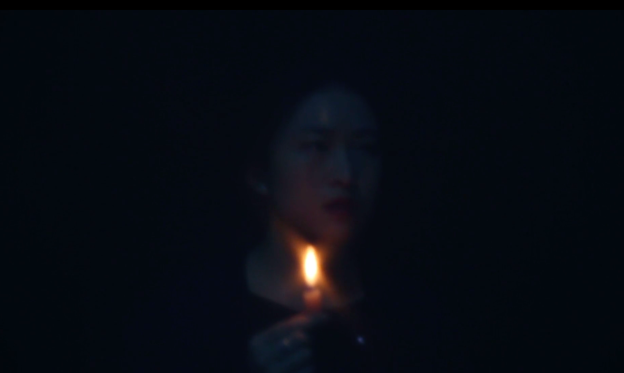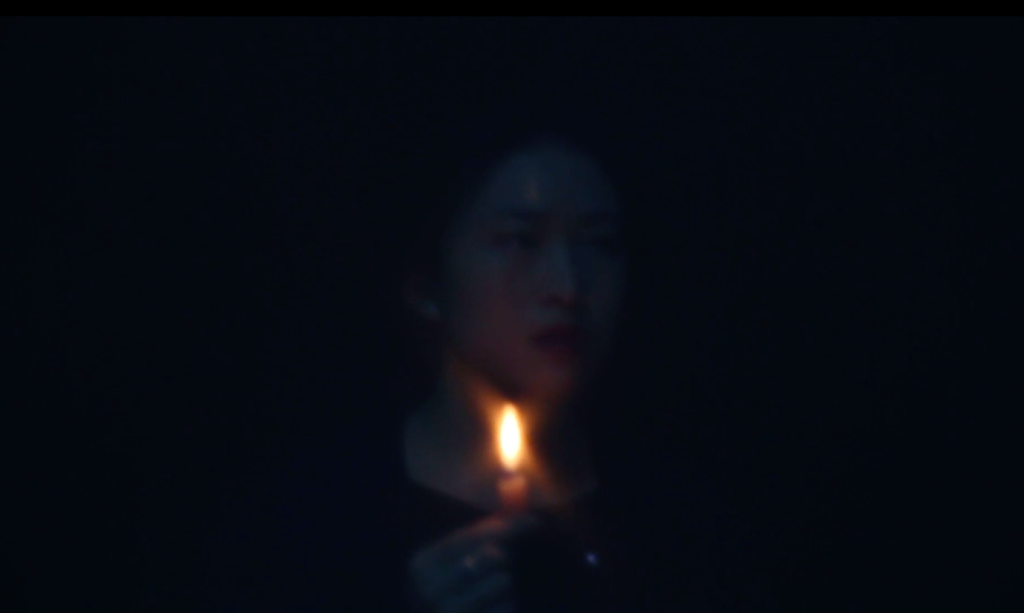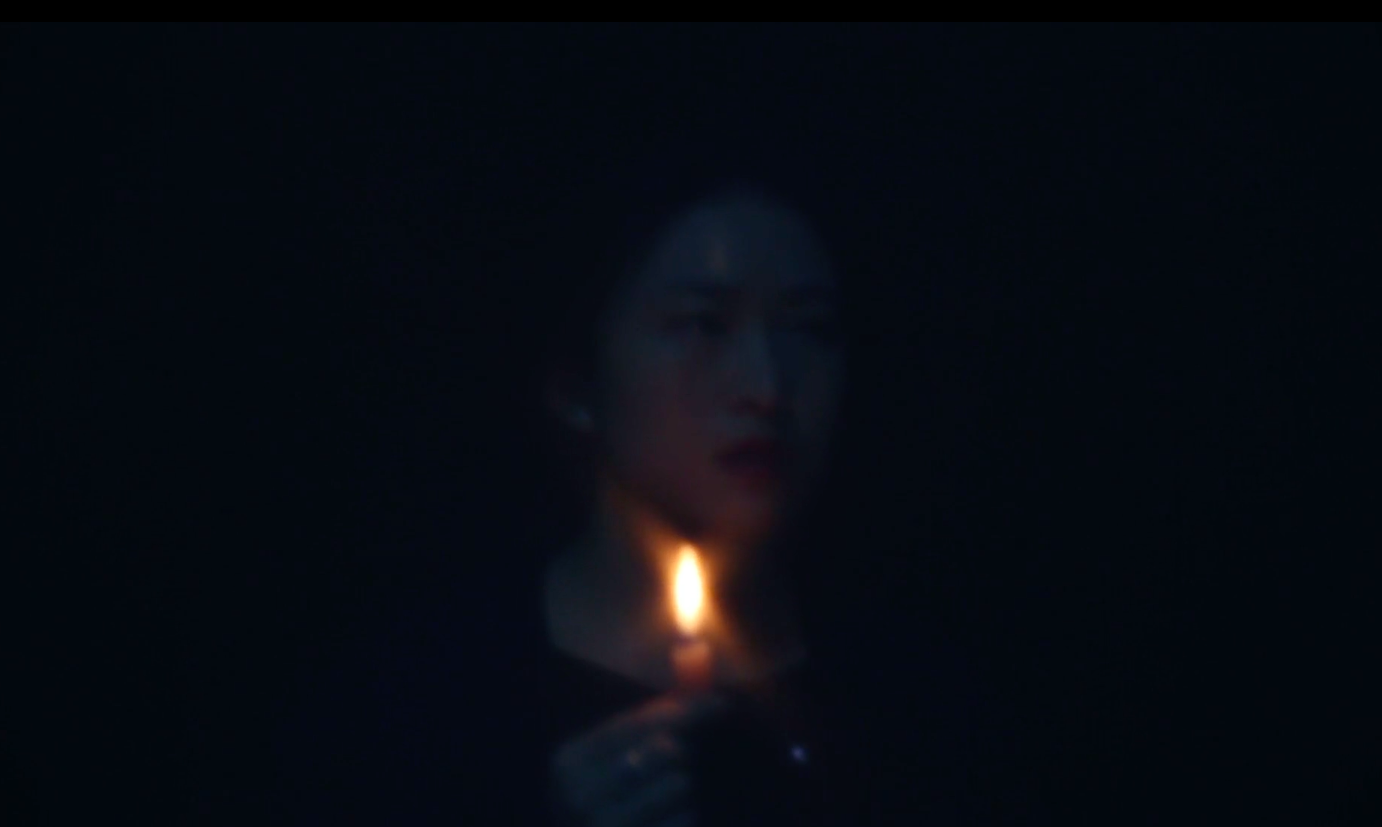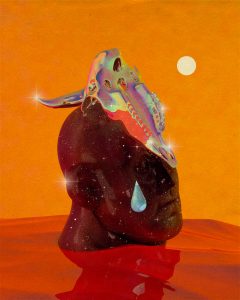
VERILY WE BELONG TO THEM, AND VERILY TO THEM SHALL WE RETURN
Word Count: 1,369 |
Download this article
by •
SILENCE
with UNNAMED POEM IN MOURNING
a video by LUCY XIAOCHUAN LIU

[2:156]
According to Freud, mourning is a repeated reality-testing to check whether the loved one is gone, then withdrawing feelings from them. The pain and dejection may fade but won’t disappear until a replacement love object is sought. This reality-testing resonates with me. My mum unthinkingly picked up the phone to call my Nani just the other day, and crumbled when she realised she would never hear her voice again. What do the “replacement objects” look like for the loss of a Mother, Brother, Sister, and Brother-in-law all in the space of four weeks?
I agree with some parts of Freud’s theory. So many of us, including my mum, are testing reality in the face of crippling grief, especially when our realities have been cataclysmically compromised by Covid-19. What I don’t agree with Freud on, is that grief disappears with a detachment of feelings from the lost person, and a subsequent replacement object. I don’t believe that the grief ever leaves us, nor do the souls of the people we love.
The Holy Quran says do not speak of those whose lives are taken in God’s will as dead. They are living but you are unaware (2:154). These lines may be interpreted to align with psychoanalyst Karl Abraham’s 1927 theory that successful mourning involves internalisation of our lost loved ones, where their soul continues to live on in our hearts. The etymology of psychology is derived from the greek word “psy,” specifically referring to the study of the soul. However, due to the Eurocentric and Western underpinnings of the psy disciplines, conversations regarding the immortality of soul and spirit are often eliminated or pathologised in psychological explorations of grief.
Both death and grief are inevitable parts of living that we must be open to meeting. Black feminist bell hooks highlights grief as an essential ingredient of love: “To be loving is to be open to grief, to be touched by sorrow, even sorrow that is unending.” Are we allowing ourselves to feel grief, through this pandemic and beyond?
The pandemic has traumatically torn our collective rituals of mourning from so many of us and overloaded us with bereavement that we have no means to process. The ghusl is an important and essential ritual for Muslims, which involves washing a person’s entire body in ritually pure water before burial. Covid-19 social distancing rules have meant that countless Muslim families have been unable to wash their lost loved ones, or even gather together in prayer for them. These rituals are vital practices of grief and mourning. Without them, we can easily become isolated and unmoored in our grief, and quick to feel shame for how debilitated we are by the loss, especially when the hamster wheel of capitalism is still spinning, tugging us to return to optimal functionality and productivity.
Capitalism has produced a culture obsessed with wellness, where wellness is inferred as the apparent baseline condition for productivity. Public and prolonged displays of grief are therefore deemed as indicators of dysfunction. We have a huge amount to learn from how elephants honour their grief. Elephants give themselves permission to feel grief collectively, rather than deny it. When one elephant in the herd dies, the entire herd gathers in communion for a ritual of remembrance, which includes quite literally feeling into every crevice of their loved one’s bones with their trunks, whilst remaining quiet. The herd may stay with the body and continue this ritual for days or weeks at a time.
How are we supposed to grieve during the altered reality of Covid-19 where a multitude of collective rituals are impossible, and nothing feels quite as real anymore. Visible death cues are inescapable with our streets littered in anti-bac gels, face masks, and gloves. Many of us are trying to cope with this shift in reality, this proximity to death and our entrapped grief, by becoming the walking-dead. We are staring into screens, scrolling social media feeds, and watching the numbers on the death toll rise more than we look into each other’s eyes. It is hard to discern what reality-testing looks like in this new world, and even harder to accept this as our new reality.
But what if our conception of “reality” has always been one of denial? The life-altering adaptations induced by the pandemic are no doubt traumatic, but they have reminded us that death is an inevitable part of life, rather than its end. Thomas Merton teaches that we live in a culture of denial “obsessed with the idea of death as hiding and waiting for us in ambush.” This is a lie that we can no longer cling to through Covid-19. Death is here, always knocking at the door of a new day, asking us to live more fully. Those who are no longer here with us physically remain with us in soul and spirit. If we are quiet enough to listen, we may just hear their whispers on a gentle day’s end, over a small glass of Coke.
Sanah’s poem on grief appeared in Issue 007: DESIRE alongside artwork by Lucy on the same theme. This essay is an extension and reflection on grief in the era of Covid.
UNNAMED POEM IN MOURNING

“‘Death. A piece of bad meat that the butcher threw into the trash. I am a stray dog. I approached it. There are flies all over it. I sniffed it. I breathed it in strongly. Then jerked my head. I started to go away with my muzzle close to the ground . . . but I trotted back, wagging my tail. I sniffed it again. Finally, I licked it, I sank in my teeth. All the flies lifted into the air.”
This work features me responding to the audio of myself performing my auto-fictional poem. It is a metaphysical piece that confronts my own depression following my good friend’s suicide, rendered as the death of my alter ego.
The words in the piece are infused with imagery, they define a surreal, mystic landscape; I embody multiple personas moving through it, using my voice to reenact their movements. In my performance and videography, I further complicate the theatrical tensions by being the speaker and the silent listener at once. However, behind this scenography is another “me”—the clear-minded writer, director, and videographer. These artistic devices are my strongest effort in extending into and grasping the cherished beings in my memory.
~ Lucy Xiaochuan Liu
SANAH AHSAN writer
Sanah Ahsan is a queer Muslim womxn, a clinical psychologist, award-winning poet, and all-round disrupter. Her work is centered on compassion, decolonising our understandings of mental health, and embracing each other’s madness. Sanah’s psychological work is rooted in liberation and community psychology. She draws on therapeutics, poetics, and activism as interconnected practices to support racialized and marginalized people. Sanah recently published her research on deconstructing whiteness within clinical psychology, and she is currently working to build antiracism as a core competency into UK clinical psychology training.
Sanah’s work also includes features on: Channel 4, BBC 2, The Guardian, Ted Talks, and at the Southbank Centre, London. She is currently writing her debut poetry collection.
LUCY XIAOCHUAN LIU artist
Lucy Xiaochuan Liu is an artist and poet mainly wrestling with grief and historical residue. She is the recipient of a Pollock-Krasner Foundation Fellowship and the Paris Photo Prize. Her poetry chapbook The Rye of Pondering was selected by poet Cameron Awkward-Rich and published by Jubilat at the University of Massachusetts Amherst. Her art and writings have been published by the Smithsonian Institution’s Folklife Magazine, Paris Lit Up Magazine, Columbia Journal, and Smith College Museum of Art. She has read her poems at Amherst College, Unnameable Books, and the Emily Dickinson Museum. She is an art journalist, interviewing artists including Gregory Crewdson, Viviane Sassen, and Stephen Shore.
© Copyright for all texts published in Stillpoint Magazine are held by the authors thereof, and for all visual artworks by the visual artists thereof, effective from the year of publication. Stillpoint Magazine holds copyright to all additional images, branding, design and supplementary texts across stillpointmag.org as well as in additional social media profiles, digital platforms and print materials. All rights reserved.



